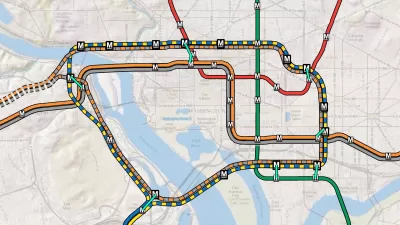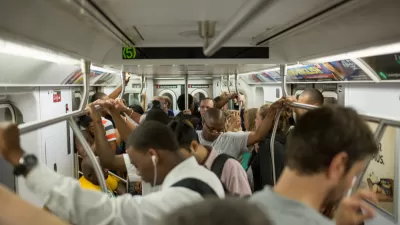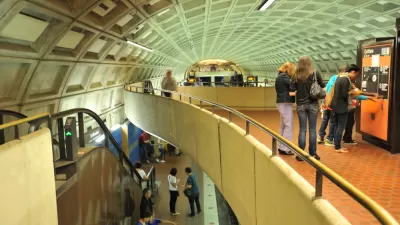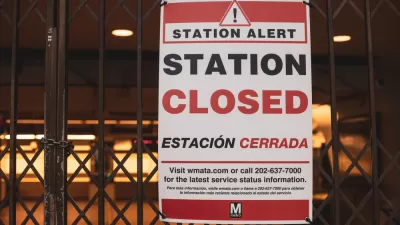While cities like New York and San Francisco's transit systems are bursting at the seams, D.C. Metro's rail system lost 5 percent of its ridership between 2010 and 2015. This week Metro acknowledged some of its fault in that trend.

"Metro, in an unusual acknowledgment, says breakdowns and other service failures appear to be contributing to a steady, years-long decline in ridership that is causing financial stress for the transit agency and could lead to fare increases," reports Paul Duggan.
The mea culpa, of sorts, comes from a revenue briefing provided by staff to Metro's governing board this week. In addition to high profile incidents that shut down service, such as smoke from an electrical line in a Yellow Line tunnel in January, supplement a track record of poor on-time performance. Interestingly, on-time performance has worsened since the Silver Line opened for service in July 2014.
According to Duggan, "Metrorail foul-ups are a daily norm. On Tuesday, for example, in addition to rush-hour slowdowns that are expected to last into next year on the Silver, Orange and Blue lines, there was a large-scale service disruption on the Blue and Yellow lines during the evening rush hour because of a problem on tracks shared by the lines between the National Airport and Braddock Road stations."
Any action to correct the performance of Metro will have to come under the watchful eye of the federal government. Keith Laing recently reported that the Federal Transit Administration approved a "correction action plan" for Metro in the wake of passenger safety incidents.
FULL STORY: Metro acknowledges breakdowns might be adding to a ridership decline

Alabama: Trump Terminates Settlements for Black Communities Harmed By Raw Sewage
Trump deemed the landmark civil rights agreement “illegal DEI and environmental justice policy.”

Planetizen Federal Action Tracker
A weekly monitor of how Trump’s orders and actions are impacting planners and planning in America.

The 120 Year Old Tiny Home Villages That Sheltered San Francisco’s Earthquake Refugees
More than a century ago, San Francisco mobilized to house thousands of residents displaced by the 1906 earthquake. Could their strategy offer a model for the present?

Opinion: California’s SB 79 Would Improve Housing Affordability and Transit Access
A proposed bill would legalize transit-oriented development statewide.

Record Temperatures Prompt Push for Environmental Justice Bills
Nevada legislators are proposing laws that would mandate heat mitigation measures to protect residents from the impacts of extreme heat.

Downtown Pittsburgh Set to Gain 1,300 New Housing Units
Pittsburgh’s office buildings, many of which date back to the early 20th century, are prime candidates for conversion to housing.
Urban Design for Planners 1: Software Tools
This six-course series explores essential urban design concepts using open source software and equips planners with the tools they need to participate fully in the urban design process.
Planning for Universal Design
Learn the tools for implementing Universal Design in planning regulations.
Clanton & Associates, Inc.
Jessamine County Fiscal Court
Institute for Housing and Urban Development Studies (IHS)
City of Grandview
Harvard GSD Executive Education
Toledo-Lucas County Plan Commissions
Salt Lake City
NYU Wagner Graduate School of Public Service





























